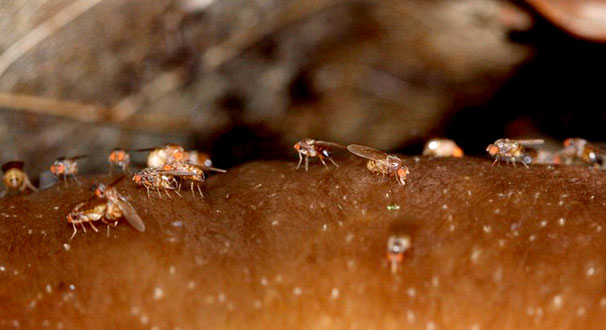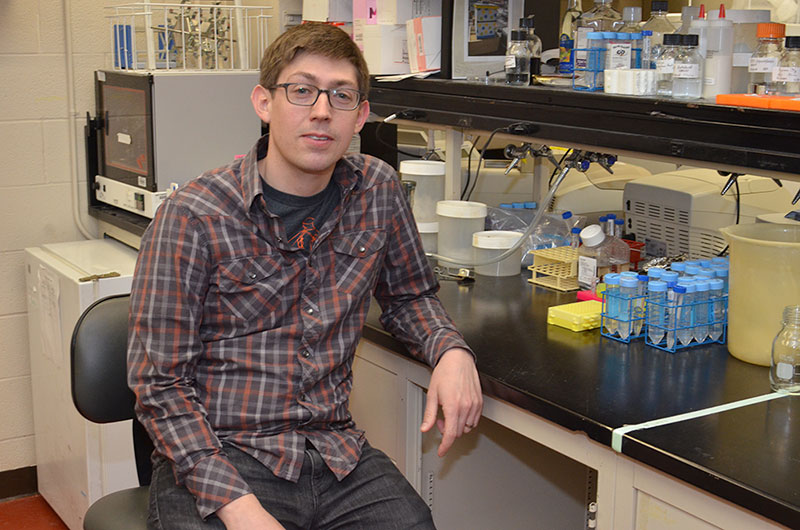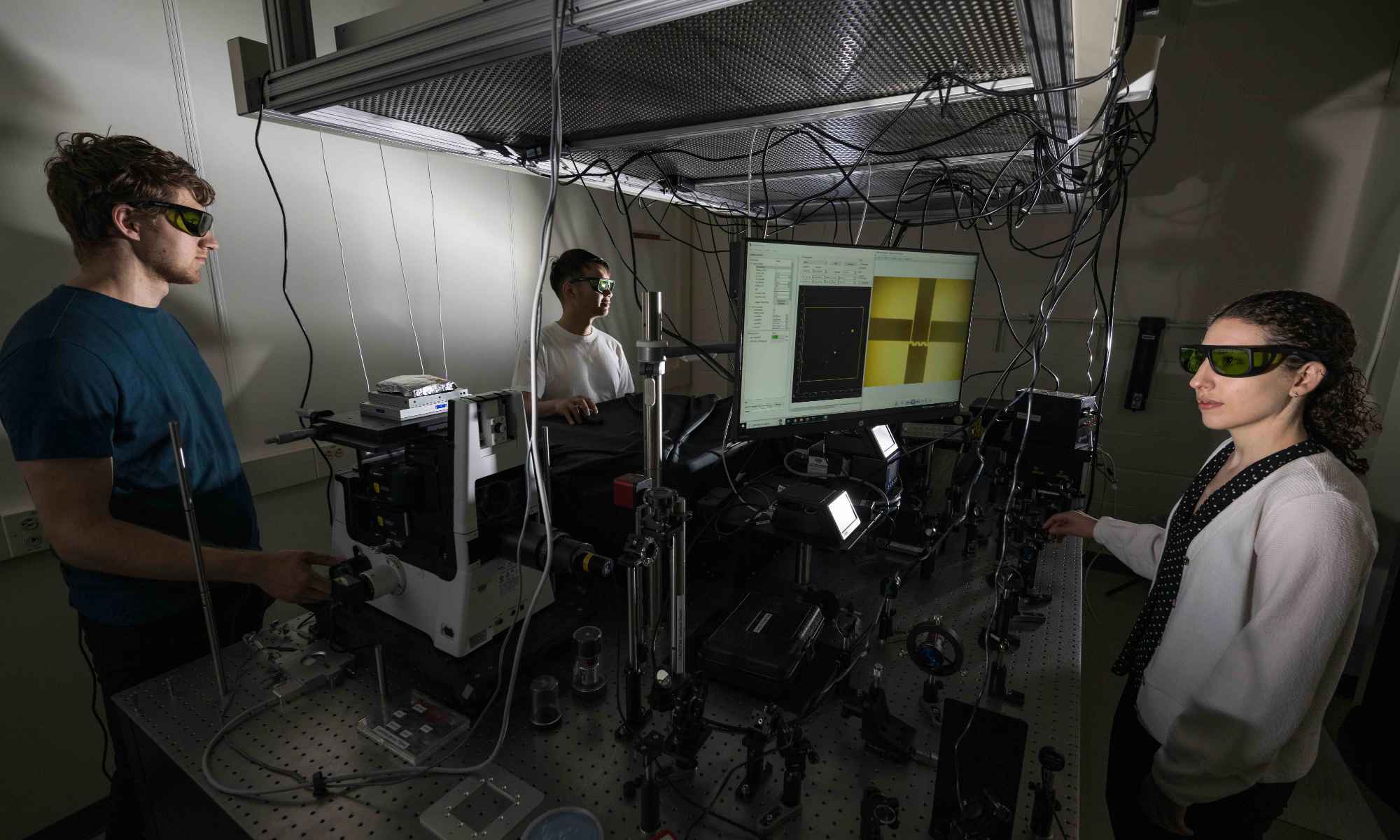Drosophila melanogaster—the common fruit fly—is widely used in laboratory experiments because it can provide insights into the biological processes of other, more complex organisms, including humans.
However, what is seen in fruit flies in the lab may bear little resemblance to what is seen in fruit flies in the wild—especially when it comes to the bacteria found in their intestinal tracts, two University of Rochester researchers and a colleague at Cornell report in Ecology Letters.
Their findings challenge some widely held assumptions about whether an organism’s diet determines the bacteria likely to be found in its gut. The findings also challenge a recent hypothesis about how this bacterial population should vary among different species.

(University photo / Vincent Martinson)
Lead author Vincent Martinson, a postdoctoral research associate in the lab of John Jaenike, professor of biology, collected 215 wild, mushroom-eating fruit flies of four different but ecologically overlapping species in Rochester area woodlands. Theirs is the first study to analyze gut microbiota (the microbe population living in the intestine) at the level of individual flies in wild Drosophila. Intestinal microbes enable an organism to process otherwise inaccessible energy sources in the diet, exclude pathogens, and detoxify certain compounds.
Martinson discovered that:
- The communities of bacteria in the intestines of the wild flies he collected were quite different from those found in the guts of similar species in the lab. This is a clear indication that the lab is an “abnormal environment compared to what the flies experience in the wild,” says co-author Jaenike.
- The bacteria most commonly found in the guts of the wild flies were not present, or were found in only small amounts in the decaying mushrooms they feed upon. This contradicts a widely held assumption that “whatever they’re eating, that’s what’s in their gut,” Martinson says. Exactly why the bacterial composition in the gut differs from the diet is not clear, he adds. “Potentially the gut is selecting for a certain set of microbes that can survive with the different oxygen content or the antimicrobials that the host is producing,” Martinson says. “Or there may be microbes specialized to the gut that have identified that this is a good place to live.”
- The exact composition of gut bacteria varied widely from one individual fly to another, even within the same species. However, there were broad similarities in the types of bacteria found in the guts of all four species despite the “deep” genetic divergence of those species. This contradicts a relatively new hypothesis suggesting that widely divergent species should exhibit fewer similarities in their microbiota.
The findings suggest researchers may want to rethink how they use fruit flies in their experiments.
“Most researchers focus on what happens to Drosophila in the lab, and on a set of microbes they find in the lab flies, assuming they are closely related to those found in the wild,” Martinson said. “I think that needs more research. It’s important to look at wild flies, and see the actual spectrum of microbes that associate with them, especially at the individual level, and then bring those microbes into the lab.”

Jaenike points out that even researchers studying Drosophila in the wild will examine the combined microbiota of as many as a hundred flies. “That completely eliminates the possibility of seeing individual variation.”
The next step, Jaenike says, is to “see what causes that variation and what are the consequences. Were some of the flies sick, were some of them healthy?”
Humans can also show considerable individual variation in gut microbiota, “but the underlying causes could be different in humans than in flies – or it could be similar. We just don’t know yet,” Martinson says.
Angela Douglas of the Department of Entomology at Cornell University was also a coauthor.



